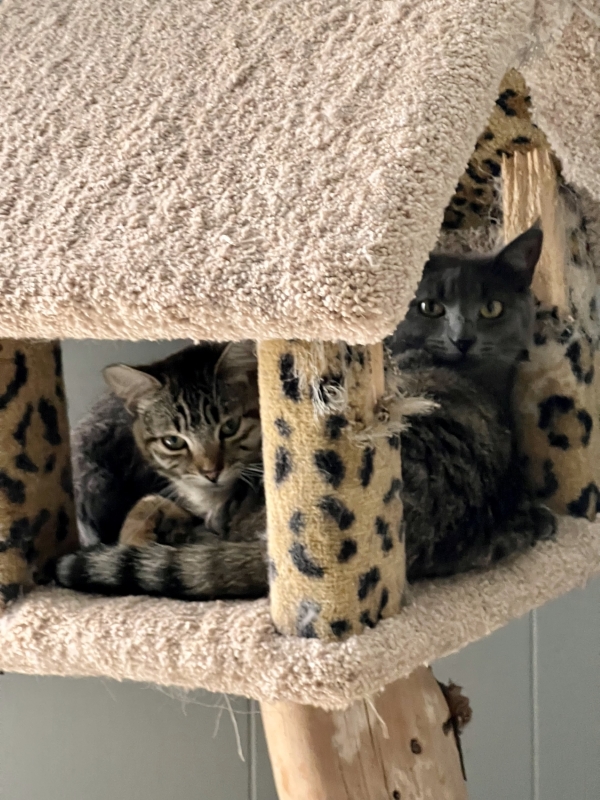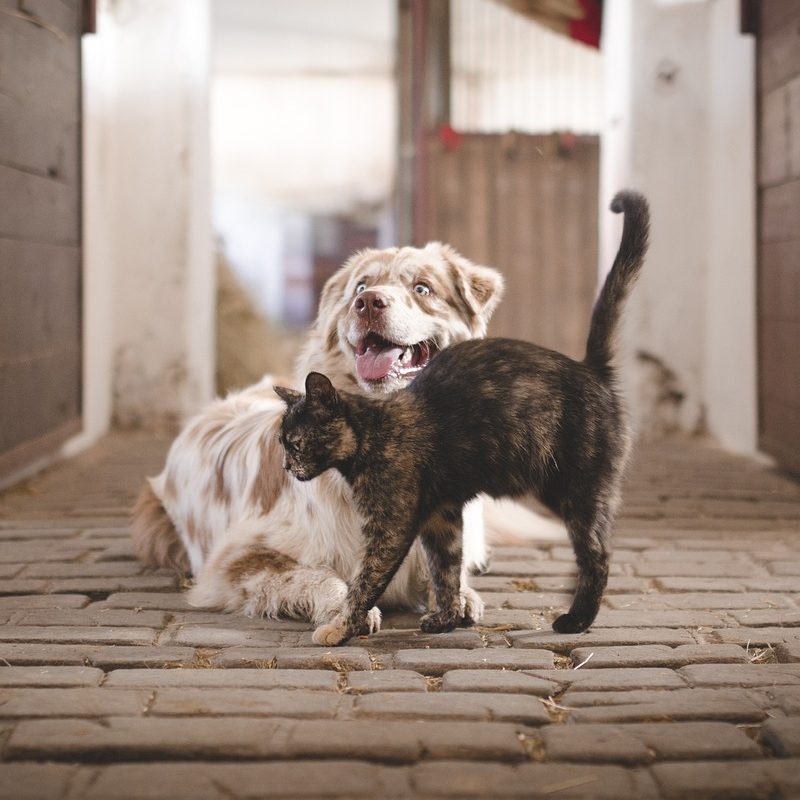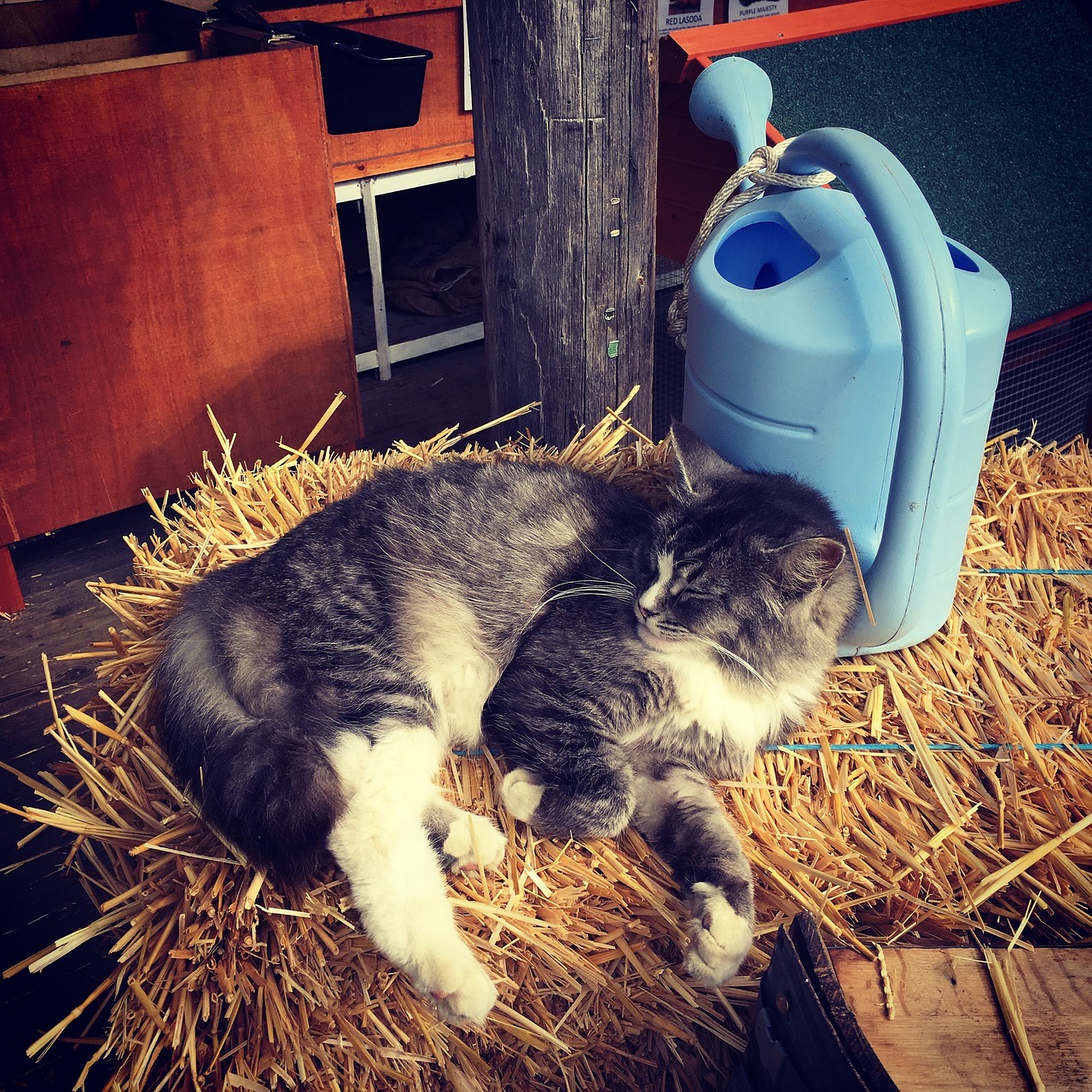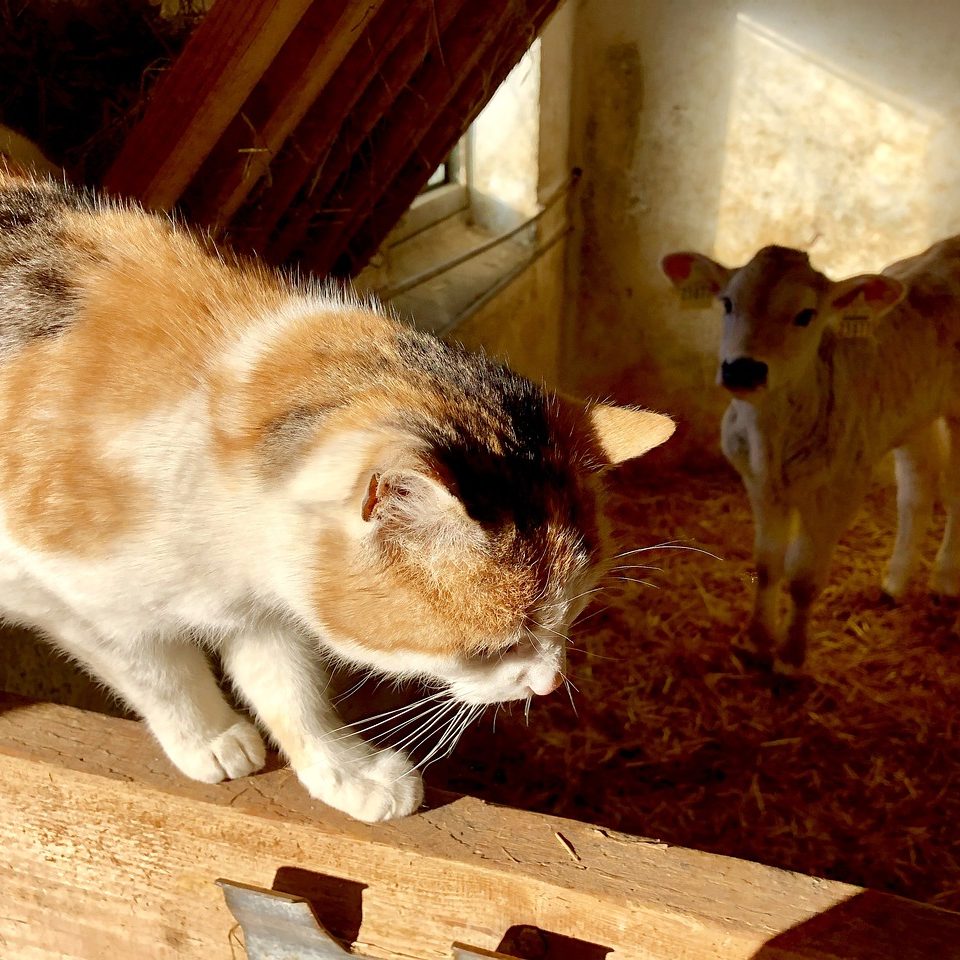
PAWS of Grays Harbor recommends cats to live indoors for their safety, health, and to not impact wildlife, but some cats cannot acclimate to life indoors and are not socialized. If you are interested in adopting one of these cats to live in your barn, shop, or on your property, these cats MUST be confined to an enclosed space for a period of 3–4 weeks to teach them that it is a safe place to stay and call home. These cats will need access to warm and safe shelter, a dependable source of food, and fresh water.
The following is a description of this process, how to set up your new cat for success and create positive associations between you and your new cat. Because feral cats are more likely to stick around if they have feline friends, we generally adopt barn cats in pairs, unless there is already a resident barn cat. Adoption fees for a single barn cat are $50, and pairs are for 2 for $75. We are happy to make a recommendation for a pair based on which cats we see associating with each other in the shelter.
The cats adopted out through this program are almost always unfriendly and may not ever be able to safely be touched or petted, but they need safety and shelter as much as any other cat in our shelter. Kittens are not eligible for the barn cat program. All barn cats will be spayed/neutered and microchipped prior to adoption.
Preparation & Supplies
- Cat food - both wet and dry - and clean water. Barn cats need a dependable source for food and water. It is not true that cats must be hungry in order to hunt. Chronically hungry cats can't hunt very well, and may leave in search of an adequate food source in someone else's barn or garage if you don't give them enough food to keep them healthy and happy. During the acclimation period, and occasionally thereafter, we recommend that you offer these cats both dry and wet food in order to show them that they are living in a good place with an ample source of tasty food. Don’t “free feed” the cat. Keep food out of kennel except during meal times.
- Enclosed area that is escape proof. Most times a large dog kennel is used, but some other ideas are a cattio, dog run, or unused chicken coop. Shelter needs to be inaccessible to predators such as coyotes, loose dogs, etc.
- Bedding/blankets for both inside the enclosure as well as covering the sides and top of enclosure (if needed, such as with a dog kennel). The outside coverings helps the cat feel safe.
- At least one cozy “hidey-hole” inside the enclosure. This can be as simple as a cardboard box with bedding/blankets inside. This will be the cat’s safe space.
- Litter box, litter and scoop. This may be a temporary need while kept confined as they adjust to their new environment.


Routine
- Designate consistent times during the day as meal times. This is when you will feed your cat, ideally both wet and dry food.
- Always use a similar phrase or sound (“here kitty”, “psst-psst”, shaking the food bowl, etc.) when giving food to help the cat associate that with food.
- Spend a little time near them during the day (about 10-15 minutes) so they get used to your sounds and smells. Talk to them gently, read outload, or just be around, but DO NOT try to force interaction with you. This can be dangerous for you and un-do all the work you’ve done towards having your cat trust you.
- Make sure all members of the household – including dogs and other outdoor cats make their presence known by the new cat. Have them spend a small amount of time near the enclosure a few times.
- Maintain this constant routine for 3-4 weeks. We want the cat to feel comfortable with their new surroundings and know they will keep getting fed here.
After 3-4 Weeks
While 3-4 weeks of an introductory period is recommended, you can always extend this period.
- Do not release if it is raining! Cats use smell to find their way and rain can wash these away.
- Leave enclosure door open, but keep everything else the same, especially for the first week. Some cats may not leave their enclosure right away, or may leave for short times then return. After about a week, food and water bowls can be moved to a more convenient area if needed.
- Always try to maintain feeding schedule.
- Used litter can be sprinkled around the yard for smell. We use wood pellets as litter.

FAQs
Generally, re-vaccinating barn cats every 3 years is recommended but a veterinarian can provide you with detailed recommendations. You may need to trap them in order to take them to a vet.
If you are able to touch them, you may be able to use a topical flea treatment such as Advantage II. Otherwise, you may need to use a flea treatment that can be added to their food.
No. Kittens are not eligible for this program for safety reasons. If we believe the cat may suitable as a household companion, they may not be eligible for this program. Cats eligible for this program may:
- Be social but too feisty with people
- Be shy or fearful of people
- Have litterbox habits that make them unsuitable for a home
No. Working cats may be suitable in a variety of non-home environments such as warehouses, farms, businesses, etc.
You can trap them to move them to their new environment using a similar introduction process at the new location. You can also contact the new property owners to see if they would be willing and able to care for the cats.
Often, yes. We only have cats ear-tipped when they get spayed or neutered by a veterinarian if they have already been identified as a barn cat. If a qualifying cat comes in already spayed or neutered, we do not.

